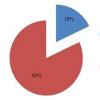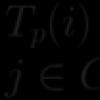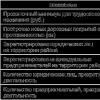Cortexin: instructions for use, analogues and reviews, prices in Russian pharmacies. Why are Cortexin injections prescribed, and how to use the drug correctly? Cortexin indications for use injections intramuscularly
- Latin name: Cortexin
- ATX code: N06BX
- Active substance: Animal cerebral cortex polypeptides
- Manufacturer: Geropharm LLC, Russia
Compound
Release form
The drug is available as a sterile lyophilized powder for solution for intramuscular injection.
The cardboard package is completed with two blister packs, each of which contains 5 vials of lyophilisate, and instructions for use.
In pharmacies, you can buy Cortexin 10 mg No. 10 and Cortexin 5 mg No. 10.
Cortexin 10 mg is available in 22 mg vials of 5 ml. The drug is intended for the treatment of adult patients.
Cortexin 5 mg was created specifically for use in pediatrics. It is available in 11 g bottles with a capacity of 3 ml.
pharmachologic effect
Cortexin belongs to the group nootropic and gamkergic drugs that mainly affect CNS . Against the background of its application are noted:
- nootropic ;
- neuroprotective ;
- antioxidant ;
- tissue-specific effects.
Pharmacodynamics and pharmacokinetics
Cortexin is a bioregulator with a polypeptide structure, which is a complex of water-soluble neuropeptides . The molecular weight of these polypeptide fractions does not exceed 10 thousand daltons, which allows them to penetrate the physiological barrier separating central nervous and circulatory system .
The mechanism of action of the drug is realized due to:
- activation of regulatory , neurons and brain neurotrophic factors ;
- ratio normalization amino acids , performing mediator functions of excitatory and inhibitory types of action, as well as important brain neurotransmitters and serotonin ;
- moderately pronounced GABA-ergic effect;
- reducing the level of paroxysmal (paroxysmal) convulsive activity brain and the ability to normalize the indicators of its bioelectrical activity;
- preventing the formation of oxidative degradation products lipids (free radicals).
The nootropic effect of Cortexin is accompanied by an improvement higher brain functions , improving memory, increasing the ability to learn and stress resistance.
The neuroprotective effect is manifested in the ability of the agent to increase tissue resistance. brain to the damaging effects of various endogenous neurotoxic factors and reduce the toxic effects of neurotropic substances.
Antioxidant action manifests itself in the ability of the drug to influence oxidative stress (cell damage provoked by oxidative processes) and increase the survival rates of neurons under conditions of oxygen starvation.
The mechanism of this action is associated with the suppression of free radical processes and peroxide lipid oxidation of cell membranes , as well as with the correction of oxygen-dependent pathological conditions.
As a result: the destruction process slows down cell membranes improves microcirculation, decreases vascular wall permeability , normalizes the level contained in the blood and triglycerides .
The tissue-specific effect of the drug is associated with an increase in the intensity CNS neurons and PNS , stimulation of reparative processes in CNS , improvement of the functional state cerebral cortex and general tone somatic and autonomic nervous system .
Pharmacokinetic characteristics are not given to determine, since the decay time of the L-series amino acids and neuropeptide fractions that are part of the active substance Cortexin is no more than 3 minutes.
This makes it impossible to establish the rate and degree of absorption of peptide residues, their distribution over various organs and tissues, as well as the rate and ways of their excretion from the body.
Indications for the use of Cortexin: from what medicine is prescribed for adults and children
Indications for the use of the drug are:
- provoked bacteria or viruses infectious diseases nervous system ;
- conditions associated with impairment circulation in the brain ;
- TBI and its consequences;
- diffuse brain injury syndrome different nature of origin;
- cerebral (suprasegmental) autonomic disorders .
In combination with other drugs, the drug is prescribed for the treatment, as well as for the treatment acute and chronic inflammatory diseases of the brain and/or spinal cord various etiologies.
For children, indications for the use of Cortexin are reduced learning ability, impaired memory and thinking, child delay syndrome psychomotor and speech development (ZPRR), various forms cerebral palsy .
Contraindications
The drug is contraindicated in patients with hypersensitivity to cortexin and/or glycine.
Clinical studies to establish the effect of the drug on the body of a pregnant woman and a developing fetus have not been conducted. For this reason, the drug is not recommended for use at any time.
Since the data clinical research regarding the use of the drug during the period are absent, if necessary, the appointment of Cortexin breast-feeding it is recommended to stop.
Side effects of the drug
Potentially possible side effects are due to individual sensitivity to the components that make up the drug.
Cortexin injections, instructions for use (Method and dosage)
The drug is intended for injection into the muscle.
How to breed Cortexin?
Before injection, the powder contained in the vial should be diluted with one or two milliliters of a 0.5% solution (), physiological saline (isotonic sodium chloride solution (0.9%)) or water for injection.
To prevent the formation of foam, while trying to direct the needle to the wall of the vial.
How to inject a child with Cortexin?
Cortexin is allowed to be prescribed from the first days of life. In some situations, parents have to give the child injections on their own. And here questions arise how to properly inject Cortexin and what is the best way to dilute the powder.
Before giving an injection, water for injection is drawn into the syringe, novocaine or saline , then pierce the lid of the vial and pour the collected liquid into it.
The syringe should be removed (the needle remains in the cap) and the contents of the vial should be shaken thoroughly until the powder is completely dissolved. After that, the syringe is reattached and the required amount of solution is drawn into it.
For an injection, it is better to take a new needle, since the needle with which the solvent for the lyophilizate was injected may already be fairly dull.
The medicine is administered slowly, as rapid administration can cause very severe pain.
For babies up to six months, an intramuscular injection is made into the front surface of the thigh (so as not to accidentally damage the sciatic nerve).
For children, especially very young children, all injections are made with saline or water for injection. injections with novocaine less painful than injections saline , however, breed medicine novocaine allowed only if there is a firm belief that this will not cause allergic reaction The child has ( novocaine able to give the strongest allergy and ).
Like others neurometabolic drugs , It is recommended to inject Cortexin before 12 noon, given its activating effect and the ability to provoke psychomotor agitation .
Instructions for use Cortexin for adults
Cortexin injections are given to adult patients once a day, daily for ten days, at a dose of 10 mg.
At massive ischemic stroke (MII) in the acute phase, as well as in the early recovery period, the indicated dose is recommended to be administered to the patient twice a day (morning and evening) for ten days. Ten days later, the course should be repeated.
Instructions for use Cortexin for children
V pediatric practice the medicine is used to treat children from the first days of their lives.
For patients whose weight does not exceed 20 kg, the drug is prescribed at a dose equal to 0.5 mg / kg of body weight. For patients weighing more than 20 kg, a dose of 10 mg is indicated.
The duration of treatment is ten days. If necessary, after three to six months, the patient may be assigned a second course.
The drug rarely causes side effects, has almost no contraindications and can be used to treat even newborn babies. Its main disadvantage is the release form: Cortexin is not available in tablets, and this partly complicates its use in children if the latter require several courses.
Overdose
To date, messages about side effects developed as a result of an overdose of Cortexin, no.
Interaction
The drug is incompatible with drugs that have a peptide structure.
Terms of sale
The drug belongs to the category of prescription drugs and should be dispensed from pharmacies only on prescription.
Storage conditions
Cortexin should be stored in a dry place protected from sunlight at a temperature of 2 to 20°C.
Best before date
Suitable for use within 36 months from the date of manufacture.
special instructions
The drug is produced exclusively in the form of a lyophilisate, Cortexin is not produced in tablets.
The drug should not be mixed in the same syringe with any other drugs.
Cortexin's analogs
Coincidence in the ATX code of the 4th level:Cortexin analogs in tablets: Armadin and Armadin Lone G, Borizol , Rilutek , .
Cortexin analogs in ampoules: Armadin , Mexiprim , Neurotropin , Nikomex , Nucleo CMF Forte , Cytoflavin .
Cortexin or Cerebrolysiin - which is better?
Studies conducted on laboratory rats have shown that Cortexin, when administered intraperitoneally and injected into lateral ventricle of the brain have a similar effect.
A comparative analysis of the central effects of the drugs led to the conclusion that, despite their similarity, Cortexin is more active.
At the same time, it provokes a much smaller amount adverse reactions and can be used from birth (whereas Cerebrolysin in pediatric practice is used in the presence of reasonable indications).
According to some patients, injections Cerebrolysin less painful in comparison with Cortexin injections.
Cortexin for children
Instructions for use Cortexin for children allows the use of this drug from the first days of a child's life.
Reviews of doctors on Cortexin for children confirm the manufacturer's statements that the drug practically does not cause adverse reactions, does not teratogenic and carcinogenic and well tolerated by patients.
Its use in neurology, neonatology and pediatrics can improve the behavior of the child and his general condition with various kinds of tones, normalize memory function and speech, and relieve headaches.
Reviews about Cortexin
Cortexin is a drug widely used in neurological practice. Reviews about Cortexin for adults, which can be found on numerous thematic forums, testify to the effectiveness of the use of this remedy for the treatment of patients of various ages (both for infants and for senile people).
Taking the drug allows you to speed up the recovery process after injuries and, and in older people stimulates work brain , increases the ability to memorize and concentrate, and also prevents the decline in intellectual abilities.
Reviews about Cortexin for children allow us to conclude that the drug is most often prescribed for children who have certain deviations in neuropsychic development. In particular, indications for the use of the drug are cerebral palsy and brain damage that occurred in the prenatal period (close to the date of birth) or directly during childbirth.
Injections for children - and reviews of Cortexin confirm this - make it possible to achieve significant improvements: after a course of treatment with the drug, the child becomes calmer, his brain activity improves, interest in learning increases, memory and speech improve.
The use of the drug for infants (in particular, for newborns who were born prematurely) allows you to notice obvious improvements in a fairly short time, which manifest themselves in a calmer behavior of the child or the emergence of new skills in him (for example, the ability to independently roll over from his back to his tummy and back).
Mothers whose children were prescribed Cortexin note that after the course of treatment, the child literally “came to life before our eyes”. The advantages of the drug, many consider the absence of side effects and low toxicity of the drug. As disadvantages, the rather high price of the drug and the pain of injections are most often indicated.
Compound
Each vial contains:
active substance - Cortexin 10 mg (a complex of water-soluble polypeptide fractions isolated from dry extract Cortexin®),
excipient - glycine 12 mg (stabilizer).
Pharmacotherapeutic group
Other psychostimulants and nootropics. The codeATX: N06BX.
Description
Freeze-dried powder or porous mass of white or white with a yellowish tint.
Characteristics of the drug
Cortexin is a complex of water-soluble polypeptide fractions with molecular weight no more than 10,000 Yes.
Pharmacological properties
Pharmacodynamics
According to the experimental data, the complex of low molecular weight water-soluble polypeptide fractions CORTEKSIN® has a nootropic, neurotrophic, neuroprotective and antioxidant effect on brain tissue in traumatic, ischemic or toxic lesions of the central nervous system (CNS). In preclinical studies on models of traumatic brain injury (TBI), toxic neuropathy and total cerebral ischemia, the use of CORTEKSIN® showed a decrease in the death of brain neurons, a decrease in oxidative stress, faster recovery of reflexes, coordination and cognitive functions.
Mechanism of action
The mechanism of action of the drug CORTEXIN® at the molecular level has not been studied in detail, however, in studies in vitro showed a decrease in the death of neurons, both in peroxide oxidative stress and in glutamate poisoning against the background of the use of this drug. In the TBI model, the use of the drug prevented microcirculation disorders and reduced swelling of the brain and subcortical structures. A positive effect on the tone of the main and peripheral cerebral arteries in the post-occlusive period was shown on a model of cerebrovascular accident. Against the background of treatment with CORTEKSIN® TBI and toxic neuropathy, a decrease in the pathological level of lactic acid and an increase in the concentration of glucose and ATP in the brain tissues were shown, which indicates the activation of the intracellular metabolism of neurons by this drug and the activation of reparative processes. Also, against the background of the use of the drug CORTEKSIN®, there is an increase in the intensity of tissue respiration (oxygen consumption) and activation of the aerobic pathway of energy generation, which also confirms the activating metabolic effect of the drug. Thus, the complex of peptides of the drug CORTEKSIN® activates intracellular processes of regulation and antioxidant protection.
Pharmacokinetics
Cortexin® is a mixture of polypeptides similar or identical to endogenous human polypeptides, and therefore direct measurement of pharmacokinetic parameters cannot be performed. Cortexin® is administered intramuscularly, which ensures maximum bioavailability and rapid entry of the drug components into the blood. Changes in biochemical parameters, electrical (EEG) and metabolic activity of the brain against the background of the use of the drug indirectly indicate the tissue-specific tropism of the drug and penetration through the blood-brain barrier.
Metabolism is determined by the composition of the drug, is identical to the metabolism of endogenous peptides and corresponds to general principles metabolism of peptides and amino acids: degradation occurs under the action of blood proteases and peptidases, with the formation of active and inactive short peptides and continues by intracellular proteases in lysosomes. The end product of degradation are amino acids, which are reused as substrates in anabolic and catabolic processes. Further elimination occurs common to the products of nitrogen metabolism "guy.
Indications for use
v complex therapy disorders of cerebral circulation, in the complex therapy of traumatic brain injury and its consequences. encephalopathy of various origins.
Method of application and dosage
The drug is administered intramuscularly.
Before injection, the contents of the vial are dissolved in 1-2 ml of water for injection or 0.9% sodium chloride solution, directing the needle to the vial wall to avoid foaming, and administered once daily: adults at a dose of 10 mg for 10 days.
With hemispheric ischemic stroke in the acute and early recovery periods for adults at a dose of 10 mg 2 times a day (morning and afternoon) for 10 days, with a second course after 10 days.
The duration of the course of treatment is determined by the doctor.
Pobface-to-face action
In very rare cases (less than 0.01% or 1:10,000), hypersensitivity reactions may occur, which may have the following clinical manifestations: anaphylaxis reactions (anaphylactic shock, angioedema of the larynx), skin rash, pruritus, hyperemia of the skin, hyperemia at the injection site.
In very rare cases (less than 0.01% or 1:10,000), an excitatory effect of the drug on the nervous system has been noted, which may manifest itself the following symptoms: psychomotor agitation, impaired coordination of movements, insomnia, anxiety, tachycardia (increased heart rate).
In the event of adverse reactions, including those not listed in this leaflet, you should stop using the drug and consult a doctor.
Contraindications
Individual intolerance to the drug
Precautionary measures
Use CORTEXIN® only as directed by your doctor!
The use of the local anesthetic Lidocaine as a solvent for the preparation of a solution of the drug CORTEXIN® is not recommended.
The vial with the dissolved drug should not be stored and used after storage. Cortexin® solution is not recommended to be mixed with other solutions.
Special precautions for the destruction of unused medicinal products are not required.
Information about the features of the use of the drug CORTEXIN® in persons with impaired function pecheni and kidneys is absent, and therefore it is recommended to evaluate the ratio of expected benefits and potential risks before using the drug.
Use in children
Special studies proving the safety profile in this category of patients have not been conducted, and therefore it is recommended to assess the ratio of expected benefits and potential risks before using the drug. At present, positive experience has been gained in the use of the drug in children with a body weight of up to 20 kg at a dose of 0.5 mg / kg, with a body weight of more than 20 kg - at a dose of 10 mg for 10 days.
Use during pregnancy and during breastfeeding
The drug is contraindicated in pregnancy (due to the lack of data from clinical studies). If necessary, the appointment of the drug during lactation should stop breastfeeding (due to the lack of data from clinical studies).
The effect of the drug on the ability to controlyat vehicles, mechanisms
In the event of symptoms of an exciting action (see section "Side Effects"), the drug may affect the performance of potentially dangerous species activities that require special attention and quick reactions (driving vehicles, working with moving mechanisms).
Overdose
Currently, cases of drug overdose have not been reported.
Cortexin is a popular drug from the group of nootropics, which is prescribed to patients as a drug therapy for cerebrovascular disorders in people of all ages, pregnant women and newborn babies. This drug contains a number of low molecular weight fractions of peptides that have the ability to penetrate the blood-brain barrier and penetrate into the neurons of the head of the CNS. In addition to nootropic, Cortexin also has a pronounced neuroprotective effect, specifically affects tissues and is a good antioxidant.
Among the main therapeutic effects of the drug should be highlighted:
- stimulation of the brain, improvement of memory processes, concentration of attention;
- increased stress resistance;
- protection of brain neurons from the toxic effects of chemicals and drugs;
- anticonvulsant action;
- help in restoring brain function after severe stress, injury, ischemic attack.
The main advantage of Cortexin is the speed of therapeutic action, which is combined with the absence of a large number of side effects characteristic of other nootropics. Despite this, the drug has its drawbacks, in particular, the lack of a tablet form of the drug and the pain of injections.
Cortexin: instructions for use
Cortexin 10 mg lyophilizate is a drug for improving the functionality and protection of brain nerve cells. It is a powder for the preparation of a parenteral solution. How to breed Cortexin? The lyophilisate can be diluted with water for injection, but it is better to do this with novocaine, since the injection is very painful.
Among the indications for the use of funds can be identified:
- neuroinfections of bacterial and viral origin;
- consequences of traumatic brain injury;
- changes in brain tissue, provoked by circulatory disorders;
- asthenic syndrome;
- encephalopathy of alcoholic, toxic origin;
- conditions caused by acute and chronic inflammation of the brain;
- autonomic disorders of central origin;
- reduced ability to learn and transform information;
- deterioration of the processes of memorization and thinking;
- cerebral palsy;
- epilepsy;
- delayed mental and psychomotor development in young children.
In addition to a huge number of indications, the drug has a number of contraindications for use:
- individual intolerance to the components of the drug;
- breastfeeding period.
Since there is no data on studies of the effect of the drug on the body of a pregnant woman and the fetus, during the period of bearing a child, the remedy is either not prescribed, or is used exclusively under the supervision of specialists.
Currently, there is no information about overdoses or side effects of the drug, except in cases where the patient showed hypersensitivity to Cortexin. The drug interacts well with other drugs, so it is often included in complex treatment regimens for diseases.
The shelf life of the drug is 2 years from the date of production, the data on which are located on the package.
Cortexin - injections
The drug is available in the form of a lyophilisate or powder, which, after dilution, turns into a solution for intramuscular injection. Parenteral solution is prepared with 1 ml or 2 ml of 0.9% sodium chloride, water for injection or 0.5% novocaine. The latter is recommended for breeding most often, as it allows you to make injections less painful.
According to the instructions, the drug is recommended to be administered daily in the amount of once. Adults and children weighing more than 20 kg should be administered 10 mg of the drug for ten days. For babies up to 20 kg, the drug is prescribed at a dose of 0.5 mg per kilogram of body weight. Medication applied by courses, the break between which should not be less than three months.
During the recovery period after an ischemic stroke, patients are prescribed increased concentrations of Cortexin, namely, 10 mg of the drug twice a day for ten days from repeated application in two weeks.
Cortexin: the price of the drug and where can I buy it?
The drug today can be bought at any pharmacy. It has all the necessary quality certificates and is approved for use on the territory of our state. The cost of the medicine can hardly be called budgetary, but still it is not very high. To purchase a medicine cheaper than it costs in a retail network of pharmacies, you can use the services of Internet resources.
Cortexin: analogues to be trusted
Cortexin has no analogues in its structural composition. Despite this, the drug can be replaced by a huge number of effective drugs that have a similar principle of action to it. These medicines are available both in tablet form and in the form of solutions for injection. Among them are many domestic drugs, as well as medicines imported from other countries.
Among the most popular analogues of Cortexin 10 mg should be highlighted:
- Actovegin- a well-known and popular drug, which is a deproteinized dialysate from the blood of a large cattle, intended for the treatment of brain pathologies associated with circulatory disorders (available in tablets and solution for intravenous or intramuscular injection);
- Aminalon- a tablet form of gamma-aminobutyric acid, which is the first nootropic drug;
- Nootropil- a nootropic agent based on piracetam, which is available in the form of tablets and a solution for intramuscular injection and improves the functioning of the head section of the central nervous system, and also has a pronounced protective effect in relation to them;
- Piracetam- a nootropic drug, the main active ingredient of which is the active substance of the same name;
- Nikomex- a drug that has a positive effect on brain tissue damaged after strokes, injuries, severe cerebral intoxication, nervous strain, etc. (the drug is contraindicated in childhood, pregnant women, patients suffering from hepatic and kidney failure, hypersensitivity to active ingredients);
- Ceraxon based on citicoline sodium - a nootropic and psychostimulant, which is indicated for patients with hyperactivity and attention deficit disorder associated with traumatic brain injury, stroke, age-related changes in brain tissue (available as a solution for intramuscular and intravenous infusions);
- Mexidol- a drug that has a pronounced neuroprotective effect and regulates the amount of dopamine in brain tissues (as part of complex therapy, it has fast action, especially when it comes to the consequences of ischemic damage to the central nervous system);
- Cerebrolysin- a drug from a group of drugs that are designed to protect and stimulate the function of brain tissue, as well as restore neurocytes during the rehabilitation period after strokes, severe shocks, injuries (the drug is a proteolytic fraction of peptides extracted from the brain substance of pigs);
- encephabol – effective drug with a cerebroprotective and restorative effect, which is available in the form of tablets and injections;
- Glycine- sublingual tablets with a pronounced stimulating effect, affecting directly the nerve cells;
- Panzetam- a nootropic drug with an anticonvulsant effect, indicated for patients suffering from mental disorders, epilepsy, schizophrenia, and the like.
Cortexin tablets: do they exist?
One of the main disadvantages of the drug for parenteral use Cortexin 10 mg is painful injections, which are especially difficult to tolerate by patients. childhood. That is why doctors and pharmacists often hear the question: “Do Cortexin tablets exist?”. Unfortunately, the drug is not available in tablet form, so you should not look for it in this form in pharmacies.
Cortexin - instructions for use (how to breed, how to give injections), analogues, reviews
Thank you
The site provides reference information for informational purposes only. Diagnosis and treatment of diseases should be carried out under the supervision of a specialist. All drugs have contraindications. Expert advice is required!
Cortexin represents nootropic drug, which is also a peptide (protein) bioregulator. Cortexin improves the metabolic process in brain structures, and due to this, it has a cerebroprotective, nootropic, anticonvulsant and antioxidant effect on the central nervous system.The drug is used in the complex therapy of craniocerebral injuries, cerebral circulation disorders, neuroinfections, encephalopathies, encephalitis, encephalomyelitis, epilepsy, vegetative-vascular dystonia, cerebral palsy, delayed psychomotor and speech development in children, as well as disorders of memory, thinking and ability to learning.
Composition and forms of release
Currently, Cortexin is produced in the only dosage form- This is a lyophilisate for the preparation of a solution for intramuscular injection. The lyophilisate is placed in 5 ml glass bottles, which are packed in cardboard boxes of 2, 5 or 10 pieces.The lyophilizate is a special way dried extract of protein fractions obtained from the cerebral cortex of cattle and pigs. It is this peptide extract that is the active component of Cortexin. Each glass vial contains 10 mg of extract of protein fractions of the cerebral cortex of cattle and pigs.
In addition, the pharmaceutical market of the CIS countries had children's Cortexin, the vials of which contain only 5 mg of lyophilisate of protein fractions of the cerebral cortex of cows and pigs. In addition to the dosage, Cortexin for children and adults is no different.
As an auxiliary component, only the amino acid glycine is included in the composition of the lyophilizate. Externally, the lyophilizate is a powder or a homogeneous porous mass of white or white-yellowish color.
Therapeutic action
 Cortexin contains low molecular weight (small in weight and length molecules) proteins of the cerebral cortex of pigs and cows, which, when administered intramuscularly, are able to penetrate the blood-brain barrier and enter the human brain, exerting their positive therapeutic effect.
Cortexin contains low molecular weight (small in weight and length molecules) proteins of the cerebral cortex of pigs and cows, which, when administered intramuscularly, are able to penetrate the blood-brain barrier and enter the human brain, exerting their positive therapeutic effect. Cortexin has the following therapeutic effects:
- Neuroprotective (cerebroprotective);
- Nootropic;
- Anticonvulsant;
- Antioxidant.
Nootropic action Cortexin is to improve the cognitive function of the brain. That is, it becomes easier for a person to study, work, learn new things, etc., as memory, concentration of attention and resistance to stress improve.
Anticonvulsant action lies in the ability to suppress the activity of the pathological focus in the brain and, thereby, prevent the development of seizures.
Antioxidant action It consists in slowing down the process of lipid peroxidation and, thereby, preventing damage to cells of various brain structures by free radicals. In addition, Cortexin increases the survival of brain cells under hypoxic conditions.
In addition to the above effects, Cortexin has tissue-specific action, which consists in activating the processes of metabolism and repair in the structures of the brain, thereby improving functional state and general tone of the central nervous system.
The mechanism of action of Cortexin is provided by the activation of neurons and neurotrophic factors of the brain, due to which the transfer of information between brain structures occurs much faster and more efficiently. In addition, Cortexin optimizes the balance of inhibitory and excitatory amino acids, dopamine and serotonin in the brain, which reduces seizure activity and improves bioelectrical potential.
Indications for use
Cortexin is indicated for use as part of the complex therapy of the following conditions and diseases:- Violations of cerebral circulation;
- Traumatic brain injuries and their consequences;
- Encephalopathy of any origin;
- Cognitive disorders (disorders of memory, attention, thinking);
- Acute or chronic encephalitis or encephalomyelitis;
- Vegetovascular dystonia;
- Reduced ability to learn and learn new things;
- Delayed psychomotor development of children;
- Delayed speech development of children;
- Critical conditions of newborns with perinatal lesions of the central nervous system.
Cortexin - instructions for use

How to breed Cortexin
Since the rules for the use and breeding of children's and adult Cortexin are the same, we will consider them together.The vial with lyophilizate (both for children and adults) contains one dose of Cortexin, which is dissolved immediately before the injection, and the resulting ready-made solution is administered intramuscularly. The contents of the vial can be diluted with the following solvents:
- 0.5% novocaine solution;
- Water for injections is sterile;
- The saline solution is sterile for injection.
To dilute the lyophilisate, it is recommended to purchase solutions of novocaine, saline or water for injection, poured into small containers, such as vials or ampoules. It is optimal to purchase ampoules or vials of 2 ml or 5 ml in order to use all the available solution at a time. Such a requirement is due to the fact that solutions for diluting Cortexin lyophilisate must be sterile, and it is impossible to maintain the sterility of an ampoule or bottle of relatively large volume once opened at home. Therefore, it is better to use a sterile solution for each dilution, previously stored in a hermetically sealed container.
For dilution of an adult or children's lyophilisate, 1 - 2 ml of any indicated solution is necessary. Breeding is done as follows:
1.
Take a sterile syringe of the required volume and put the needle on the needle holder.
2.
Open the solvent ampoule.
3.
Lower the needle into a vial or ampoule and draw up the required amount of solution (1 - 2 ml).
4.
Remove the aluminum foil from the cork on the Cortexin lyophilisate vial (if any).
5.
Pierce the rubber stopper on the vial with the lyophilisate with the needle of the syringe containing the solvent.
6.
Lower the needle approximately to the middle of the vial with lyophilisate.
7.
Slowly pressing the plunger of the syringe, release the solvent into the lyophilisate. In order to prevent foaming of the lyophilisate, it is recommended to direct the needle from the syringe to the vial wall, since in this case the liquid will evenly flow down the glass and fall on the powder without blowing it up.
8.
When the entire volume of the solvent is released into the lyophilizate, it is necessary, without removing the syringe needle, to gently shake the vial from side to side in order to achieve complete dissolution of the powder. When the vial contains a homogeneous solution without flakes, this means that the lyophilisate has completely dissolved and can be used for injection.
After complete dissolution of the lyophilisate, it is drawn into a syringe. You can collect the lyophilisate with the same needle that was used to dissolve the drug, provided that it was not removed from the cork for the period of mixing the solution. If the needle was removed from the stopper of the vial with lyophilisate, then another sterile needle should be taken to collect the finished solution into the syringe, since it will be used for the subsequent injection.
Lyophilizate Cortexin should be diluted immediately before the injection and used immediately after receiving the solution, since the latter cannot be stored. If for some reason the Cortexin solution was not administered immediately after preparation and stood for more than 20 minutes, then it should be discarded and the newly diluted lyophilisate from another vial should be used.
The ready-made solution of Cortexin should not be mixed with other drugs, it must be administered separately.
Dosage of the drug
Adults and children weighing more than 20 kg , Cortexin is administered at 10 mg (one bottle of lyophilizate) once a day for 10 days. Dosage data and course of treatment are the same for different states and diseases, with the exception of ischemic stroke. If necessary, courses of therapy with Cortexin can be repeated, maintaining intervals of at least 3-6 months between them.With a stroke and in the rehabilitation period after such it is recommended to inject 10 mg of Cortexin intramuscularly (1 vial) twice a day for 10 days. Then they take a break for 10 days, and again introduce one bottle of Cortexin 2 times a day for another 10 days. Two such courses of treatment with a 10-day break between them are sufficient and complete for the treatment of ischemic stroke and improve rehabilitation after its completion. It is preferable to inject in the morning and afternoon, since the administration of the drug in the evening hours can provoke excessive excitement and difficulty falling asleep. If necessary, the course of application of Cortexin can be repeated, maintaining an interval of 3-6 months between two subsequent courses.
Children weighing less than 20 kg , the dosage of Cortexin is calculated individually, based on the ratio of 0.5 mg per 1 kg of weight. The calculated dose is administered to the child once a day for 10 days. If necessary, courses of therapy are repeated every 3 to 6 months, until the desired result is obtained.
If for any reason an injection of Cortexin was missed, then the next day a double dose should not be administered. It is necessary to enter the usual single dosage of the drug and lengthen the course of therapy so that it consists of 10 injections.
Rules for injections with Cortexin
 Cortexin injections (shots) are done only intramuscularly. Before the injection, you should choose the optimal place on the body, which includes areas where the muscles come closest to the skin surface, such as:
Cortexin injections (shots) are done only intramuscularly. Before the injection, you should choose the optimal place on the body, which includes areas where the muscles come closest to the skin surface, such as: - Anterior-lateral surface of the thigh in the upper third;
- Outer upper third of the shoulder;
- Anterior wall of the abdomen (in non-obese people).
Having chosen the injection area, it is necessary to treat it with a cotton swab dipped in an antiseptic, for example, 70% alcohol, chlorhexidine, Belasept, etc. Then the needle should be inserted into the thickness of the tissues, holding it perpendicular to the surface of the skin. The needle is inserted so that about 3-4 mm of free space remains between the skin and the needle holder. After that, slowly pressing on the piston, the solution is released into the tissue and the syringe is removed. After the injection, the injection site is again wiped with a cotton swab moistened with an antiseptic.
For each subsequent injection, 1 cm recede from the trace from the last injection. That is, there must be a distance of at least 1 cm between the injection marks. All injections required for the course of therapy can be made in the same area of the body, but keeping between them 1 cm distance.
Use during pregnancy and breastfeeding
During pregnancy, Cortexin is contraindicated, since there are no authentic and convincing data on its safety for the fetus and mother.When breastfeeding, Cortexin should also not be used. If for some reason a nursing woman needs to undergo a course of treatment with Cortexin, then for the period of therapy she should stop feeding the child and transfer him to artificial milk formulas. A day after the last injection, you can continue breastfeeding if you managed to maintain lactation.
Influence on the ability to control mechanisms
Cortexin does not impair the ability to control mechanisms, but, on the contrary, improves it, therefore, against the background of the use of the drug, you can engage in any type of activity that requires a high speed of reactions and concentration.Overdose
An overdose of Cortexin was not recorded even once during the entire period of observation of the use of the drug.Interaction with other drugs
Cortexin does not significantly interact with other drugs, so it can be included in complex therapy with any other drugs.Cortexin for children
 Cortexin in practical healthcare is used for children of any age, including babies under 1 year old. For babies younger age the drug is most often prescribed to eliminate the delay in motor, mental or speech development, with PTCNS (perinatal damage to the central nervous system), as well as for the correction of behavior, namely, the elimination of tantrums, nervousness, etc. This drug people even call them "talkers", because after a course of injections of Cortexin, children quickly begin to speak, quickly and remember well new material, easily retell texts and poems, speech becomes pure and varied. Cortexin also helps to accelerate the motor development of children, as a result of which, after a course of its use, babies begin to sit down, crawl, stand up, etc.
Cortexin in practical healthcare is used for children of any age, including babies under 1 year old. For babies younger age the drug is most often prescribed to eliminate the delay in motor, mental or speech development, with PTCNS (perinatal damage to the central nervous system), as well as for the correction of behavior, namely, the elimination of tantrums, nervousness, etc. This drug people even call them "talkers", because after a course of injections of Cortexin, children quickly begin to speak, quickly and remember well new material, easily retell texts and poems, speech becomes pure and varied. Cortexin also helps to accelerate the motor development of children, as a result of which, after a course of its use, babies begin to sit down, crawl, stand up, etc. children school age Cortexin is most often prescribed to improve cognitive functions, that is, memory, thinking and attention. As a rule, the drug is given to schoolchildren with severe assimilation educational material, low learning ability, slurred and monotonous speech, etc. Also, the drug is prescribed for children of any age to eliminate the consequences of various adverse effects on the brain, such as trauma, hypoxia, stress, etc.
Cortexin - instructions for use in children
For children weighing 20 kg or more, Cortexin is prescribed during adult dosage, that is, 10 mg once a day for 10 days. And for children weighing less than 20 kg, the dosage of the drug is calculated individually, based on the ratio of 0.5 mg per 1 kg of weight. The calculated dosage is one-time, that is, this amount of the drug is administered to the child once a day for 10 days. A child can be administered any Cortexin - both for children and adults, it is only important to correctly calculate the amount of solution required for the dose.Consider, using an example, how to correctly calculate the dosage of Cortexin for a child and convert milligrams of lyophilisate into milliliters of the finished solution.
For example, a child has a body weight of 15 kg, which means that he needs 0.5 * 15 = 7.5 mg of Cortexin lyophilisate per injection. Next, you need to decide how many milliliters of the solution you will use to dilute the Cortexin lyophilisate, since this is important for further calculations. Suppose 1 ml of solution will be used to dilute the lyophilisate. Then 1 ml of the prepared solution of adult Cortexin will contain 10 mg of lyophilisate. But the child does not need all 10 mg of lyophilisate for injection, but only 7.5 mg. This means that it is necessary to calculate how many milliliters of the finished solution of Cortexin, obtained by mixing the entire volume of the lyophilisate with 1 ml of the solvent, contains only 7.5 mg active ingredient. To do this, we make a proportion:
1 ml of solution - 10 mg of lyophilisate;
X ml of solution - 7.5 mg of lyophilizate;
By proportion, we make the equation: X \u003d 7.5 mg * 1 ml / 10 mg; X = 0.75 ml.
This means that 7.5 mg of the lyophilizate is contained in 0.75 ml of a solution obtained by mixing the entire volume of Cortexin powder in the vial with 1 ml of solvent. Thus, for the production of an injection, the child will have to dilute the entire lyophilisate in the vial and draw only 0.75 ml into the syringe. The remains of the solution should be discarded, and for the next injection, dilute the lyophilisate from a new vial.
Similarly, the dosage and volume of the finished solution for injection for a child with any body weight is calculated. You can use the above scheme, substituting your own, the necessary numbers into it. When using children's Cortexin, the dosages are calculated in exactly the same way, only taking into account the fact that one vial of the lyophilisate contains not 10 mg of the active substance, but 5 mg.
Parents should remember that do not divide the lyophilisate in the vial into parts, you should breed it all. And only then from the entire solution to select the volume needed for a single injection to the child. The rest of the solution should be thrown away, not stored, and for each next injection, the entire lyophilisate should be diluted again from one vial, the required volume should be taken, administered to the child, etc.
The duration of therapy with Cortexin is 10 days, and injections are recommended in the first half of the day (before 14.00 - 15.00), since the drug has an exciting effect, as a result of which, when administered in the evening, it can cause difficulty falling asleep. Courses of therapy can be repeated, maintaining intervals between them lasting 3-6 months, and each time re-calculating the dosage according to the actual body weight of the child.
To dilute the lyophilisate for the production of Cortexin injections, children are recommended to use saline or sterile water for injection, and not novocaine. The fact is that novocaine can provoke allergic reactions and reduce the severity of the therapeutic effect of Cortexin. For children, it is optimal to dilute adult Cortexin (10 mg) with 1 ml of solvent, and for children - 2 ml.
Cortexin injections for children should be made strictly intramuscularly according to the same rules as for adults. In addition, to reduce the pain of the injection, it is necessary to take thin needles and inject the solution very slowly, and then, according to the children, they practically do not feel pain.
Side effects
Cortexin is generally well tolerated and does not cause any side effects. However, in rare cases, the drug is capable of side effects cause various allergic reactions (Cortexin is a nootropic drug with active substance of a similar name, which additionally has a neuroprotective and antioxidant effect.
Cortexin protects neurons from damage by various endogenous neurotoxic substances (glutamate, free radicals, etc.), smoothes the toxic effect of some psychotropic substances.
The antioxidant effect of the drug is manifested in lipid oxidation - this increases the survival of neurons under conditions of oxidative stress, lack of oxygen and normalizes the bioelectric connectivity of brain cells.
The tissue-specific action of Cortexin is expressed in the enhancement of the natural metabolic processes of the neurons of the central nervous system and the peripheral nervous system, improves the functions of the cerebral cortex and normalizes the tone of the nervous system.
Cortexin adjusts the balance of excitatory and inhibitory amino acids in the structure of the brain, regulates the content of dopamine and serotonin. Additionally, it has an anticonvulsant effect. Promotes quick recovery CNS functions after stress influences.
During the period of application of Cortexin, aggressiveness and mental experiences decrease, therefore Cortexin can be attributed to the group of neuroleptic drugs, as well as antidepressants and tranquilizers - as a result, treatment should be carried out under the supervision of a specialist!
Indications for use Cortexin
Cortexin is used both as part of monotherapy and complex treatment regimens:
- cerebrovascular accidents and their consequences;
- TBI and consequences;
- encephalopathy of various origins;
- cognitive impairment (disorders of memory and thinking);
- sharp and chronic encephalitis and encephalomyelitis;
- epilepsy;
- asthenic conditions;
- suprasegmental autonomic disorders;
- reduced ability to learn;
- delayed psychomotor and speech development in children;
- critical conditions of newborns with perinatal injuries of the nervous system;
- various forms of cerebral palsy, congenital hydrocephalus, cognitive impairment of another origin.
Cortexin for children prescribed with a decrease in the ability to learn, cerebral palsy, delayed psychomotor and / or speech development. For newborns, the drug is prescribed in critical conditions with perinatal damage to the nervous system.
Instructions for use Cortexin, dosage
The drug is administered intramuscularly (IM). Dissolve the contents of the vial in 1-2 ml of water for injection or in 0.9% sodium chloride solution.
Standard use according to the instructions - 10 mg Cortexin 1 time per day. The injection is best done in the morning - from 7 to 8 hours.
With hemispheric ischemic stroke in the acute and early recovery periods for adults at a dose of 10 mg, 2 injections of Cortexin per day (morning and afternoon) for 10 days, with a second course after 10 days.
Children from the first days of life and weighing up to 20 kg should be administered at the rate of 0.5 mg per 1 kg of body weight. For children weighing more than 20 kg, administer 10 mg of the drug. The medication is administered slowly, as rapid administration can cause very severe pain.
The standard course of therapy is 5-10 days. If necessary, the treatment regimen can be repeated after 1-6 months.
Reviews about the drug confirm it high efficiency. The appointment of Cortexin for children as one of the components complex treatment delayed speech and psychomotor development is an effective and justified remedy.
Peculiarities:
The prepared Cortexin solution is not subject to storage and subsequent use.
The drug has no restrictions on the use in different age groups, incl. in children and elderly people.
Side effects Cortexin
No side effects have been reported. Possible individual hypersensitivity to the components of the drug.
Cortexin does not cause drowsiness and hyperexcitability, - can be used by persons managing motor vehicle as well as those working with complex equipment.
Contraindications Cortexin
Cortexin is contraindicated in case of hypersensitivity to its components.
The drug is not prescribed during pregnancy due to the lack of data on the safety of its use in this period.
If treatment is necessary during lactation, breastfeeding should be discontinued.
Release form:
Lyophilized powder in vials of 10 mg. Designed to prepare a solution for intramuscular injection.
Cortexin analogues, list
Cortexin analogues obtained by extraction from the cerebral cortex of cattle and pigs:
- Cerebrolysin
- Cerebrolysate
Other nootropics and angioprotectors (drugs of similar action):
- Neuroxon
- Biotredin
- memicar
- memoryl
- memantine hydrochloride
- Glycine
- memantine
- Mexicor
- Glycine
- Neurofasol
List of analogues Cortexin is not intended for independent replacement of the drug. It is important to understand that the given instructions for the use of Cortexin, the price and reviews of analogues do not apply and cannot be used as a guide to drugs similar in composition to active ingredients or the principle of action. It may be necessary to change the dosage, check contraindications, etc. All actions must be agreed with the attending physician.



















